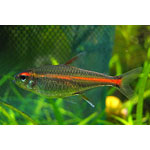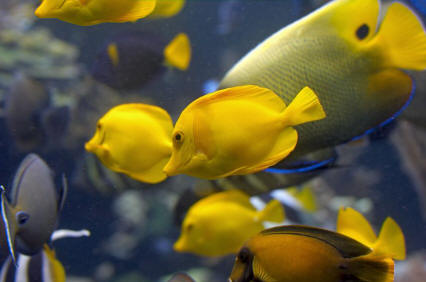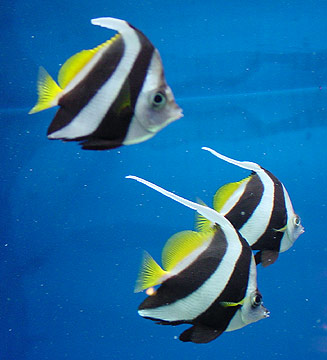Glowlight Tetra

|
Scientific Name: Hemigrammus erythrozonus Price: Upon Request Origin: South America, Guyana Family: Characidae NOT AVAILABLE NOW |
|
Other Names: Fire neon, Glo-lite tetra |
|
Technical Info
Temperature: 23 - 27 ℃
pH: 6.6 - 7
GH: 6 - 10
Max size: 5 cm
Min Tank size: 50 Ltr
Position in Aqua: Middle swimmer
Description
Glowlight Tetra is silver in colour and a bright iridescent orange to red stripe extends from the snout to the base of its tail. The front part of the dorsal fins are the same color as the stripe. Other fins are silver to transparent. It is slightly larger than the neon tetra. As they get older, the stripe becomes more and more pronounced.
Food
Glowlight Tetras will accept many small foods such as brine shrimp or daphnia, freeze-dried bloodworms and tubifex, micro pellet food, and a high quality flake food.
Breeding
To breed Glowlight Tetras, separate a pair into a "breeder tank" with no lighting at first, and then gradually increase it until spawning occurs. Water hardness should be less than 4 dKH and live food such as mosquito larvae are great inducers. Be sure to remove the adults after the eggs have been laid, as they will eat them. The eggs should hatch within 30 hours.
Compatible with
Glowlight Tetras are schooling fish that should always be kept in groups of at least a half dozen or more. They may be kept with other small peaaceful fish, including other small Tetras, Barbs, Danios, Cory Catfish, and peaceful Loaches. Although they are a schooling fish, they will generally not school together with other species. This is true even with species of similar size and shape, such as the Neon and Cardinal Tetras. Slow moving fish, and fish with long fins, are safe with Glowlight Tetras. However, avoid Angelfish as they will consider the Glowlights tasty snacks, and eat them. Avoid all large fish, as well as any fish that are predatory. Fish that are extremely active make prove stressful for the Glowlight Tetra.
Note
Female is larger and stronger with round vental section, male is slender. It may be hard to tell male from female until the fish are fully mature and females fill with eggs.

